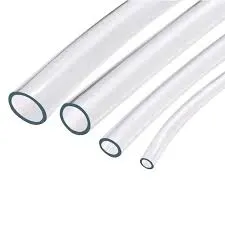अगस्त . 31, 2024 08:05 Back to list
CPVC Plate - Durable and Versatile Plastic Solutions
Understanding CPVC Plates Features, Benefits, and Applications
Chlorinated Polyvinyl Chloride (CPVC) plates have garnered significant attention across various industries due to their unique properties and versatility. As a type of thermoplastic polymer, CPVC is notably distinguished from regular PVC by its enhanced chlorine content, resulting in improved thermal and chemical resistance. This article delves into the features, benefits, and diverse applications of CPVC plates.
Features of CPVC Plates
CPVC plates exhibit remarkable durability and strength, making them suitable for demanding environments. One of the most notable features of CPVC is its ability to withstand high temperatures, with a heat distortion temperature around 100 degrees Celsius. This attribute positions CPVC plates as an excellent candidate for applications that involve hot water or high-temperature processes. Additionally, CPVC shows exceptional resistance to a wide range of chemicals, including acids, alkalis, and salts, which makes it a preferred choice in industrial settings where exposure to corrosive substances is a concern.
Another salient feature of CPVC is its lightweight nature. Compared to metals, CPVC plates are significantly lighter, which can lead to reduced shipping costs and ease of handling during installation. Moreover, the surface of CPVC plates is smooth and inherently resistant to fouling, reducing the maintenance needs often associated with other materials that can trap dirt and bacteria.
Benefits of Using CPVC Plates
cpvc plate

The extensive benefits of CPVC plates are one of the primary reasons they are favored in various sectors. First and foremost, their excellent resistance to UV damage allows CPVC plates to be used in outdoor applications without suffering from degradation due to sun exposure. This quality extends the lifespan of products made from CPVC, resulting in long-term cost savings for industries that demand reliability.
Furthermore, CPVC plates are highly customizable and available in various sizes and thicknesses, catering to specific application requirements. The ease of fabrication and installation associated with CPVC is another key advantage, as they can be easily cut, shaped, and joined using standard techniques, which streamlines the manufacturing process.
Applications of CPVC Plates
CPVC plates are utilized in a vast array of applications across multiple industries. In the plumbing and construction sectors, they are frequently employed for piping systems, where their heat and corrosion resistance play a critical role. Additionally, CPVC plates are found in chemical processing industries, where they are used for tank linings and containment solutions, effectively safeguarding against leaks and spills.
The electrical and electronics industries also benefit from CPVC plates, utilizing them for insulation and protective enclosures due to their non-conductive properties. Furthermore, in the healthcare sector, CPVC plates are used for medical devices and equipment, where sterilization and chemical resistance is essential.
In conclusion, CPVC plates represent a versatile and durable material choice that effectively meets the demands of a range of industries. Their unique features, coupled with a multitude of benefits, make them an invaluable resource for engineers and manufacturers striving for efficiency, safety, and longevity in their products. As industries continue to evolve, the importance of CPVC plates in innovative applications is poised to grow, paving the way for a future where they remain at the forefront of material science.
-
Durable PP Rigid Sheet: Lightweight, Chemical Resistant Solutions
NewsAug.21,2025
-
PVC Grey Sheet for Extraction: Chemical Resistant & Durable
NewsAug.19,2025
-
Durable PVC Pipe Fittings for Plumbing & Irrigation Needs
NewsAug.18,2025
-
HDPE Steel Belt Reinforced Spiral Corrugated Pipe | High Strength
NewsAug.17,2025
-
HDPE Pipe Fittings: Durable, Leak-Proof Solutions
NewsAug.16,2025
-
Premium CPVC Sheet: High-Temp & Chemical Resistant Solutions
NewsAug.15,2025

